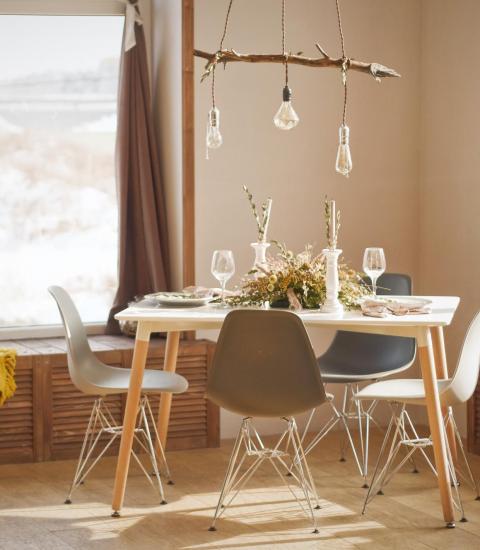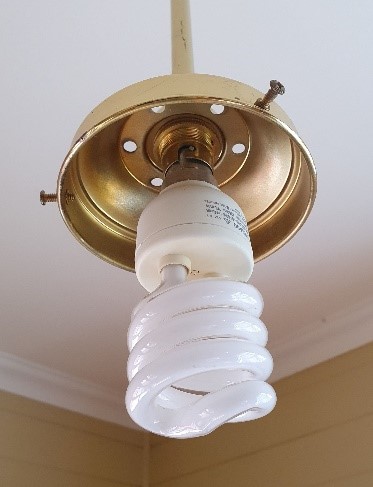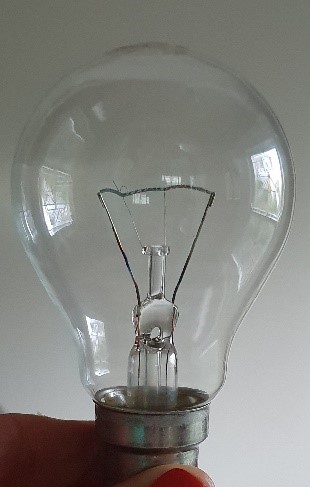
Impending doom
About 6 months ago I started to lose my enjoyment of reading. This was a significant event - I normally read 30-40 books per year.
Then I noticed that I would pick up sewing or other craft work only to lay it aside after about 10 minutes.
What on earth is wrong with me? Is it COVID-lockdown brain?
A chance remark from a colleague reminded me that my behaviour was similar to that of people who are having difficulty seeing.
But I only purchased my spectacles last year. I can see with them!
Oh no. Am I getting cataracts? Should I go back to the optometrist and get my eyes tested?
A light bulb moment
It was a cold, dull Saturday afternoon. Perfect weather for reading a book. I switched on the lights in the living room. Nothing happened. I mean, the lights were on, but there was no difference to the amount of light in the room.
Hmmm. I wonder if we need to change the light bulbs in here?
Out came the ladder, and after we removed the dust encrusted lamp shade from the pendant lamp hanging from the ceiling, we discovered
A compact fluorescent lamp!!! How long has this been here? 10 years? 15 years?

(Image: Jennifer Long)
Being a visual ergonomist, I had a lux meter handy, so I decided to measure the illuminance in all the rooms of my house. 60 lux. 50 lux. 20 lux!!!! This is about as much light as you would use for an underground carpark. No wonder I’d lost my enjoyment of reading and sewing. I couldn’t see!!!
How did it come to this?
In the old days, and by this I mean only 20 years ago, we used incandescent lamps that looked like this:

(Image: Jennifer Long)
Every now and then a lamp would blow when we flicked on the light switch, leaving the room in darkness. “Oh. We need to change the light bulb.” In the cupboard would be a stash of light bulbs ready for such an occasion, and during the course of changing the bulb there would be a process of washing or wiping down the lamp shade or light fitting (luminaire) to remove any dust or dead flies. Yuck!
But compact fluorescent lamps, and the newer LED, generally don’t blow when we flick on the light switch. Instead, they become dimmer and dimmer as they age until they are putting out very little light at all.
And because it is a gradual process, you often don’t notice that the rooms in your house are getting darker…and darker…until you can’t see. Just like me.
How often should you change the lamps (light bulbs)?
I thought this would be an easy question to answer, but it’s not.
Firstly, there aren’t any clear guidelines.
For example, an Australian Government Energy Efficiency website(1) recommends as a general guide, LED need to be changed at least every 10 years, compact fluorescents at least every 5 years, and halogens at least every 2 years.
But another page of the same website (2) states that the expected useful lifetime of a lamp can be gauged by the manufacturer’s product warranty, which could be in the order of 2 -3 years.
(Mental note: Next time I purchase lamps, read the packaging.)
Secondly, there are big differences between products.
For example, one way to judge a lamps usefulness is to work out how long it takes before the lamp only emits 70% of its original light output. But according to research reports, this could be a long as 10 000 hours (3) or as little as 500 hours (3).
How do you know which lamp you have?
Hmmm. Let’s get practical – how will you KNOW when to replace the lamps (light bulbs)?
If you have a light meter (me), then you could measure the illuminance levels in the rooms of your house. If the illuminance is less than 70% of what it was when you installed the lamps, then the lamps are probably near the end of their useful life. It’s time to replace them.
But if you don’t have a light meter (most people), then you will need to rely on your subjective impression of the amount of light. One strategy you could try is:
- Make a note when you changed the light bulbs in your room or house.
- Nominate a date (say, in 2 year’s time) when you will check if the light output is good.
- When the future date arrives, change one or two of the lamps in the room.
- Can you see a difference in the amount of light?
- If the answer is “yes” then it’s time to replace the lamps.
- If the answer is “no”, then put the old lamps back in the light fittings, and then use this process to check the light levels again in 1-2 year’s time.
Let there be light
It cost us a couple of hundred dollars, but we changed ALL the light bulbs in our house.
Now we can see what we are eating. Our rooms look bright and sparkly. I can see to read and sew.
The downside is that we can now see minor repairs that need attending to that we previously didn’t notice, and do I really have wrinkles around my eyes? It must be from all that squinting to see in the dark…
When did you last change the light bulbs in your house?
References
1. https://www.energyrating.gov.au/document/factsheet-light-bulb-buyers-guide
2. https://www.energyrating.gov.au/document/fact-sheet-led
3. Narendran N, Gu Y. Life of LED-based white light sources. IEE/OSO Journal of Display Technology. 2016;1(1):167-171.
Title photo by Daniil Silantev on Unsplash
Jennifer Long is a visual ergonomics consultant in Sydney, Australia. www.visualergonomics.com.au
